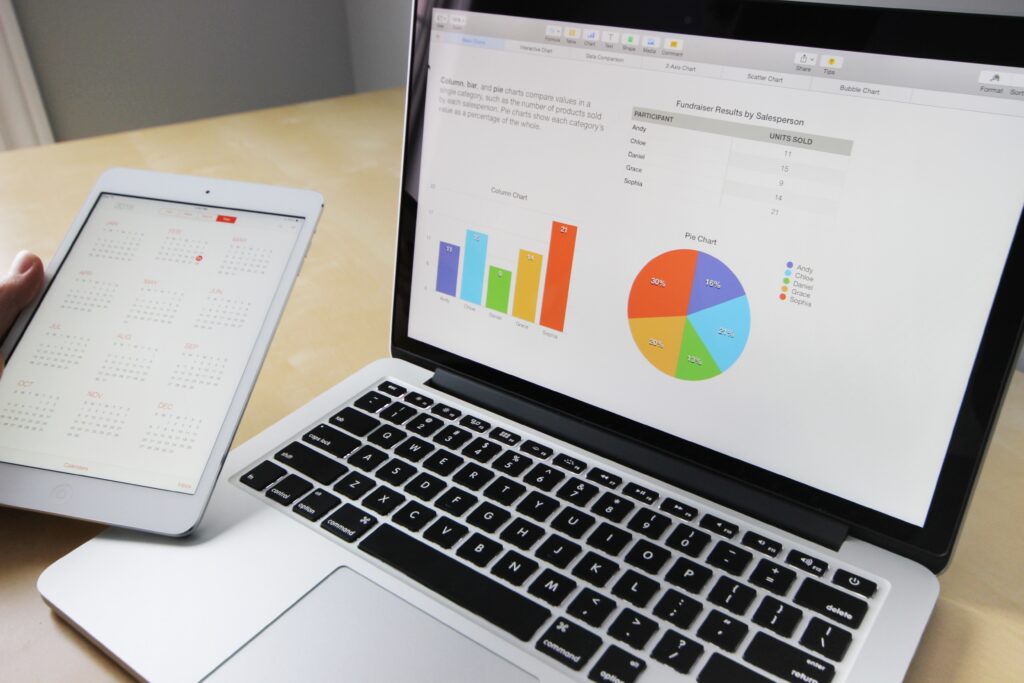The Power Duo: Unleashing the Synergy of Big Data and AI
Introduction
In today’s fast-paced, data-driven world, the duo of big data and artificial intelligence (AI) has emerged as a game-changer, reshaping the industries, helping in decision-making, and revolutionizing human interaction with technology. When these two powerful technologies combine forces, they create a synergy that unlocks incredible opportunities. In this article, we’ll delve into the captivating duo between big data and AI and explore how their collaboration is shaping the future across diverse sectors.

- Understanding Big Data
Big data refers to the massive volumes of structured and unstructured data originating from various sources such as social media, sensors, transaction records, and more. This data is characterized by its four dimensions – volume, velocity, variety, and veracity.
The Challenges: Traditional data processing tools are often inadequate to handle the sheer volume and complexity of big data. Storing, managing, and extracting valuable insights from such vast datasets demand innovative solutions.
The Opportunities: Big data, when properly analyzed, offers valuable insights, trends, and patterns that can drive strategic decision-making and foster innovation.

- The Rise of Artificial Intelligence (AI)
We have artificial intelligence (AI), a great advancement that mimic human-like intelligence in machines. AI empowers these machines to perform tasks including learning from experiences, reasoning, problem-solving, and much more. One of the great parts within AI is machine learning, a capability that enables systems to learn from data, adapt to new information, and constantly enhance their performance.
The Challenges: AI development requires significant computational resources, data availability, and expertise, making it inaccessible to some smaller organizations.
The Opportunities: AI-driven applications have shown remarkable advancements in natural language processing, image recognition, robotics, autonomous vehicles, healthcare diagnostics, and more, revolutionizing industries and improving human lives.
- The Synergy of Big Data and AI
When big data and AI converge, they create a symbiotic relationship that magnifies the impact of both technologies:
A. Enhanced Data Processing: AI algorithms can efficiently process vast volumes of data, enabling organizations to derive meaningful insights from big data faster than ever before. This enhances decision-making processes and drives innovation.
B. Improved Personalization: AI algorithms can analyze huge datasets to understand customer preferences, behaviors, and patterns. This leads to highly personalized recommendations and experiences, benefiting businesses and consumers alike.
C. Predictive Analytics: From data patterns, AI can predict future trends, behaviors, and market shifts with impressive accuracy. Organizations can make data-driven decisions and strategies to stay ahead of the competition.
D. Healthcare Advancements: AI-powered medical devices and algorithms can analyze patient data to helping in diagnosis, treatments, and drug discovery leading to improved outcomes in patients’ health.
E. Smart Cities and IoT: The synergy between big data and AI plays a crucial role in building smart cities. By analyzing data from IoT devices and various sensors, AI can optimize urban services, reduce traffic congestion, enhance public safety, and minimize energy consumption.

- Big data and AI combination has led to numerous practical use cases and examples across various industries. Here are a few prominent ones:
A. Predictive Maintenance in Manufacturing:
Manufacturers can analyze massive amount of data generated by machines to predict when equipment is likely to fail. This enables them to perform maintenance proactively, reducing downtime, preventing costly breakdowns, and optimizing maintenance schedules.
B. Personalized Marketing and Recommendations:
Online retailers and digital platforms leverage big data and AI algorithms to analyze customer behavior, preferences, and purchase history. This enables them to provide personalized product recommendations and targeted marketing campaigns to individual users.
C. Fraud Detection and Cybersecurity:
Detect anomalous patterns and behaviors in real-time, flagging suspicious transactions and activities. This helps prevent fraudulent activities, safeguard sensitive information, and enhance cybersecurity measures.
D. Autonomous Vehicles and Transportation:
Vehicles collect and analyze vast amounts of sensor data, AI algorithms enable these vehicles to recognize obstacles, interpret traffic patterns, and adapt to changing road conditions, ensuring safer and more efficient transportation systems.
E. Energy Management and Sustainability:
By analyzing data from smart meters, weather forecasts, and other sources, AI can predict energy demand patterns and optimize energy distribution in real-time. Leading to more efficient energy usage, cost savings, and a reduced carbon footprint.
F. Natural Language Processing and Virtual Assistants:
Virtual assistants, like Siri, Alexa, and Google Assistant, rely on big data and AI technologies, such as natural language processing (NLP) and machine learning which can perform all tasks.
G. Urban Planning and Smart Cities:
By collecting data from various sources, including sensors, mobile devices, and social media, AI can analyze patterns in urban behavior and traffic flow. This helps city planners optimize transportation routes, manage public services more efficiently, and enhance overall urban living conditions.
These are just a few examples, but the applications of big data and AI are vast and expanding as technology advances and data availability increases. As these technologies continue to mature, they will continue to reshape industries and improve various aspects of our daily work and benefiting our lives.

Here are some commonly used tools for the combination of big data and AI:
• Apache Hadoop
• Apache Spark: Designed for processing and analysing large-scale data.
• TensorFlow, PyTorch, Apache Flink
• Scikit-learn: It is widely used for data pre-processing and building machine learning pipelines.
• Apache Kafka: It is commonly used for ingesting and processing real-time data in big data and AI applications.
• Databricks: It is a cloud-based data engineering and machine learning platform that integrates.
Several real-life companies have been utilizing the combination of big data and AI to achieve significant profits and competitive advantages.
- Amazon:
AI algorithms is used to analyze customer behavior, predict purchasing patterns, and offer personalized product recommendations. This has led to increased sales, improved customer retention, and higher profits for the company. - Netflix:
Provide personalized recommendations. By suggesting content that aligns with user’s interests, they increase user engagement and ultimately drive more subscriptions and revenue. - Google:
From its search engine, which uses AI to provide more relevant search results, to AI advertising algorithms that target specific audiences. - JP Morgan Chase:
AI algorithms to analyze vast amounts of financial data and make informed decisions. This helps reduce fraudulent activities, minimize risks, and improve the overall financial performance of the company.
And many more…

Conclusion:
The fusion of big data and AI has undeniably sparked a revolution, propelling us towards innovation and reshaping various industries. With each passing day, we witness remarkable advancements, and the future holds even more promising possibilities. However, it is crucial to tackle ethical and privacy challenges that arise when dealing with vast amounts of data and making AI-driven decisions. By striking a balance between technological progress and responsible use, we can ensure that the synergy of big data and AI continues to shape a brighter future for us all.
Arshiya Mittal, a Technology Analyst, is an award-winning writer and author of four books. She received the Karamveer Chakra white medal and was awarded the APJ Abdul Kalam International Award for Best Writer of 2022. She emphasizes critical thinking, analytical skills, and a solution-oriented mindset, along with the belief that goals are always achievable.







